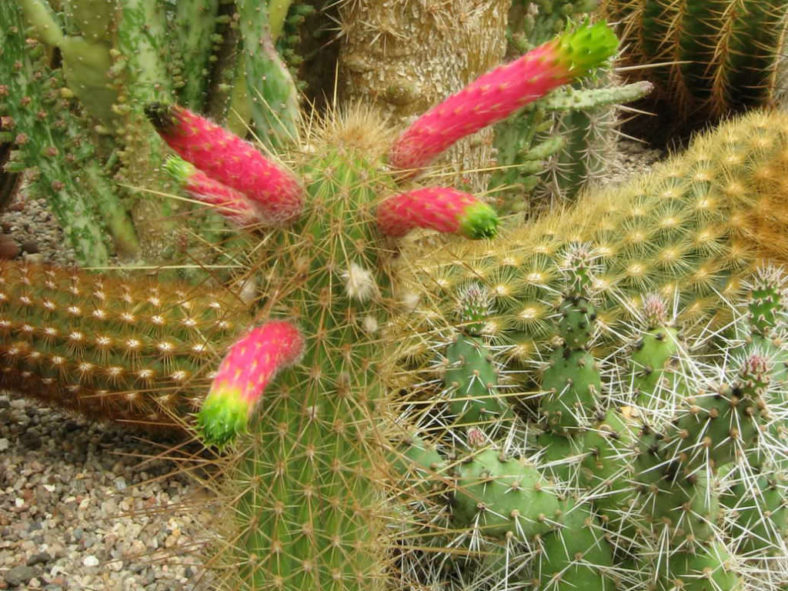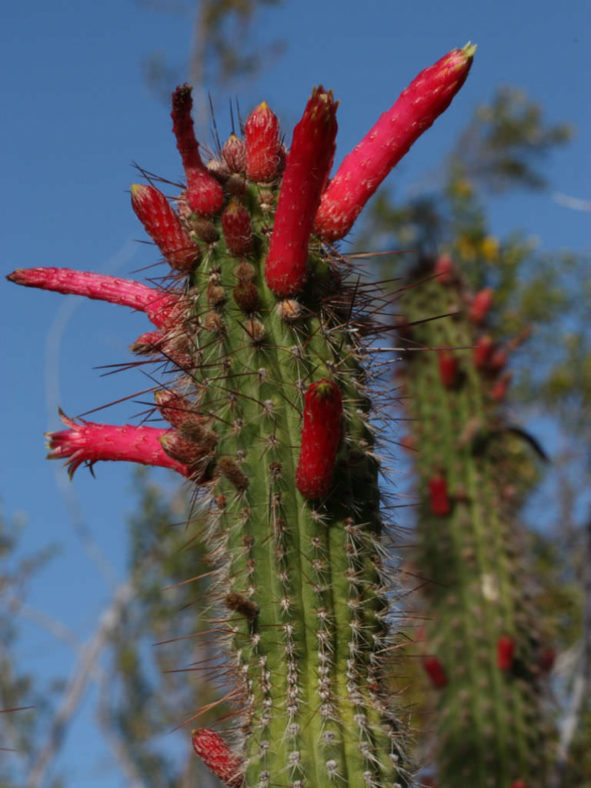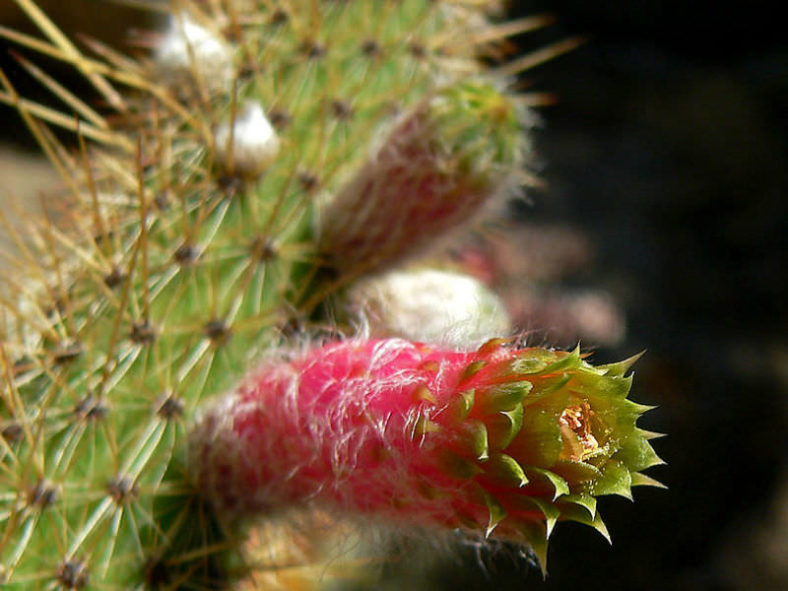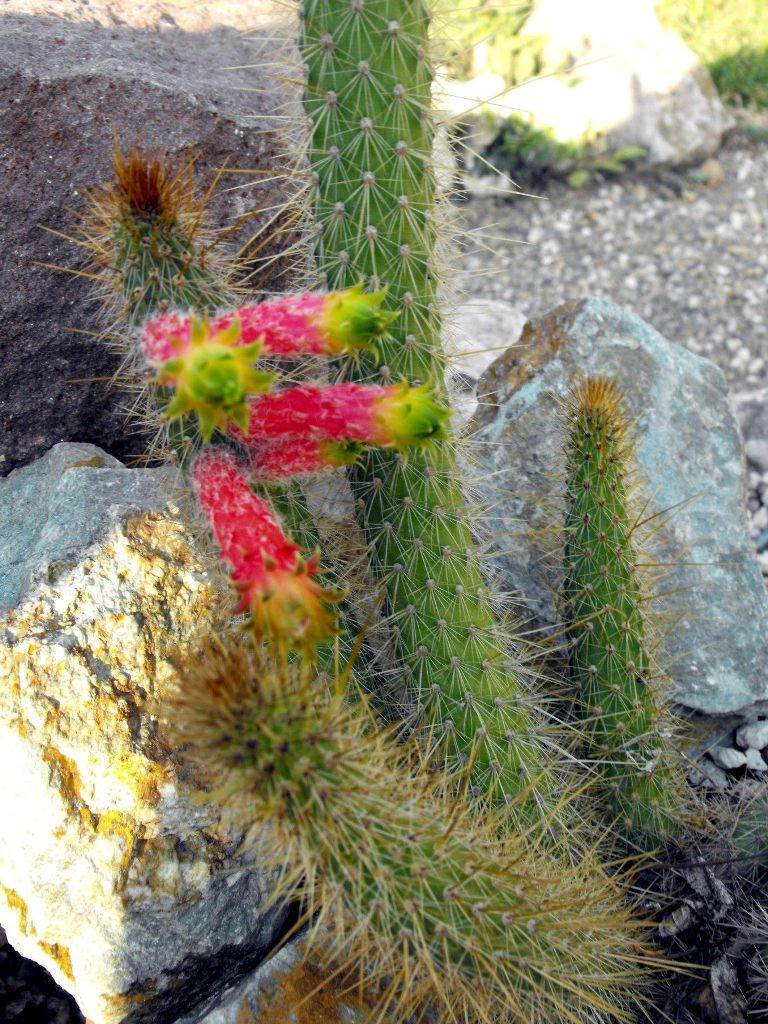Scientific Name
Cleistocactus smaragdiflorus (F.A.C.Weber) Britton & Rose
Synonym(s)
Cereus smaragdiflorus, Cleistocactus ferrarii, Cereus baumannii var. smaragdiflorus, Cereus colubrinus var. smaragdiflorus
Scientific Classification
Family: Cactaceae
Subfamily: Cactoideae
Tribe: Trichocereeae
Genus: Cleistocactus
Etymology
The specific epithet "smaragdiflorus" (pronounced "smar-ag-di-FLOR-us") means "having emerald flowers" and refers to the flowers of this species, which are emerald-green at the tips.
Origin
Cleistocactus smaragdiflorus is native to Argentina and Bolivia.
Description
Cleistocactus smaragdiflorus is a shrubby cactus with slender, cylindrical, arching to creeping stems with 12 to 14 ribs and closely set clusters of spines along the ribs. It can grow up to 6.6 feet (2 m) tall, densely branched at the base. The stems can reach a length of 6.6 feet (2 m) and a diameter of 2 inches (5 cm). Each yellow woolly areole bears 4 to 6 central and 10 to 14 radial spines. The central spines are yellowish to dark brown, measuring up to 1.4 inches (3.5 cm) in length, while the radial spines are yellowish and can grow 0.4 inches (1 cm) long.
The flowers are red to pinkish with a greenish apex and appear in summer. They are tubular and can reach a length of 4 inches (10 cm) and a diameter of 0.5 inches (1.2 cm). The fruits are spherical, yellow to reddish, and can grow up to 0.6 inches (1.5 cm) in diameter.

Hardiness
USDA hardiness zones 9b to 11b: from 25°F (-3.9°C) to 50°F (10°C).
How to Grow and Care
Choose a location that gets full sun and has well-draining soil. During the spring and summer, water Cleistocactus when the top inch (2.5 cm) of soil dries out. During the fall, reduce watering to every five weeks if the ground dries out. In winter, keep your cactus dry, as the combination of moist ground, cool temperatures, and dormancy may cause the roots to rot. Fertilize with a low-nitrogen fertilizer during the active growth period. A slow-release fertilizer applied in the spring will be sufficient for the whole year.
It is possible to propagate by cutting a small branch from a Cleistocactus and rooting it, but this inevitably leaves a disfiguring scar near the base of the main stem. If an offset is removed for propagation, remember to let it dry for a week or so, letting the wound heal. Rooting usually occurs within 3 to 8 weeks. It is, therefore, best to raise Cleistocactus from seed. Be sure to get the seeds from a reputable source.
Learn more at How to Grow and Care for Cleistocactus.
Links
- Back to genus Cleistocactus
- Succupedia: Browse succulents by Scientific Name, Common Name, Genus, Family, USDA Hardiness Zone, Origin, or cacti by Genus
Photo Gallery
Click on a photo to see a larger version.


